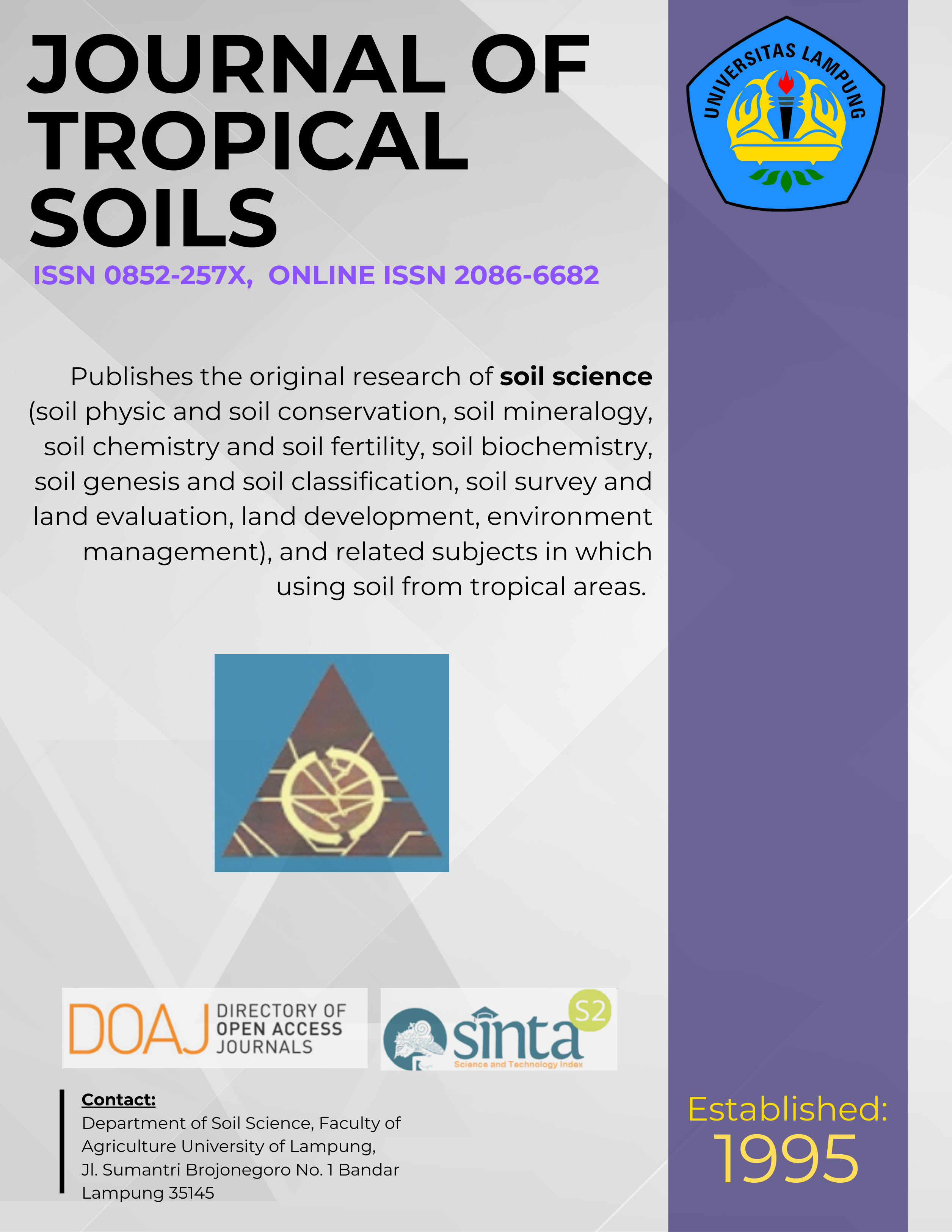Land Capability Evaluation of Upper Sekampung Watersheds
Main Article Content
Abstract
Land degradation is a serious problem in the Upper Sekampung Watersheds. This is because the farmers cultivated in steep land to coffee crops without  in adequate soil and water conservation practices.  The land degradation is mostly caused by erosion. The erosion problem not only stripping the most fertile top soil and decreasing crop production, but also resulting problems in lowland. Therefore, the reorientation land management should be improved to produce agriculture sustainability. The first step is to evaluated land capability this area. The objectives of the research were evaluate land capability of Upper Sekampung Watersheds. The results showed that the Upper Sekampung Watersheds were dominated with class and subclass land capability of III-l2 about 17.630,51 ha (41,58 %). All of the constrain for each land capability in this area is erosion hazard, especially land slope. From this research, cultivated land to coffee base crops were allowed in land capability II-l1.e1, III-l2, IV-l3, and VI-l4, with in adequate soil and water conservation practices. In contrary, the land capability of VII-l5 unsuitable for agriculture, they should be a nature or for conservation forest.
Downloads
Download data is not yet available.
Article Details
Issue
Section
Articles
License for Authors
Authors who publish with this journal agree to the following terms:
- Authors retain copyright and grant the journal right of first publication with the work simultaneously licensed under a Creative Commons Attribution License that allows others to share the work with an acknowledgement of the work's authorship and initial publication in this journal.
- Authors are able to enter into separate, additional contractual arrangements for the non-exclusive distribution of the journal's published version of the work (e.g., post it to an institutional repository or publish it in a book), with an acknowledgement of its initial publication in this journal.
- Authors are permitted and encouraged to post their work online (e.g., in institutional repositories or on their website) prior to and during the submission process, as it can lead to productive exchanges, as well as earlier and greater citation of published work (See The Effect of Open Access).
License for Regular Users
Other regular users who want to cite, distribute, remix, tweak, and build upon author’s works, even for commercial purposes, should acknowledge the work’s authorship and initial publication in this journal, licensed under a Creative Commons Attribution License.
How to Cite
Land Capability Evaluation of Upper Sekampung Watersheds. (2008). JOURNAL OF TROPICAL SOILS, 13(2), 145-153. https://doi.org/10.5400/jts.2008.v13i2.145-153

